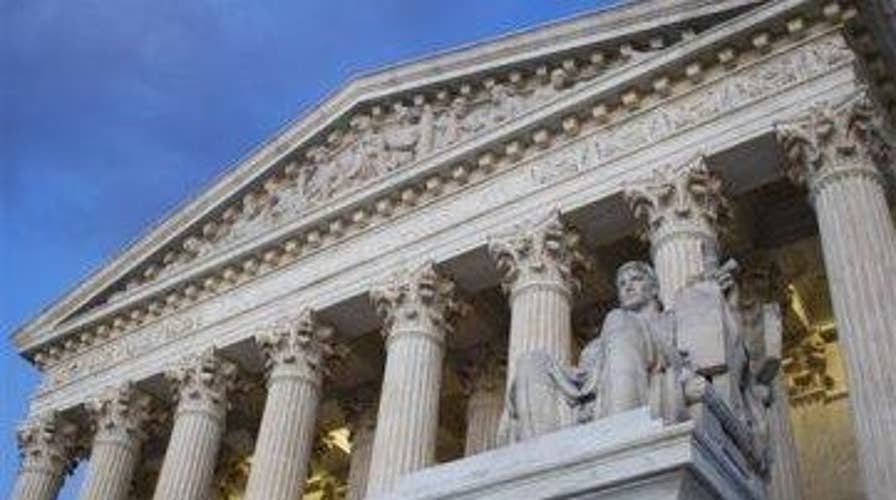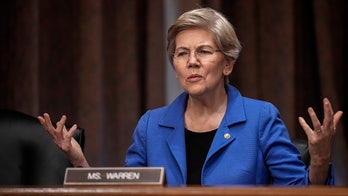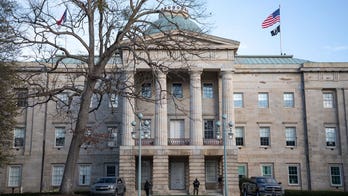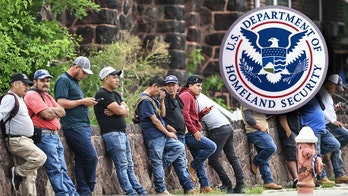Supreme Court to hear major abortion case over Texas law
Shannon Bream reports from Washington, D.C.
An especially tense Supreme Court struggled in oral arguments Wednesday to overcome past divides on abortion, in a high-profile case weighing controversial restrictions on women’s clinics in Texas.
Providers are asking the justices to keep their facilities open, claiming the rules – currently on hold – pose an "undue burden" on women around the state seeking the procedure. Dozens of states nationwide with similar or pending requirements are closely watching what the court will do, if anything, in coming weeks.
But the biggest abortion case to hit the high court in years also comes weeks after Justice Antonin Scalia’s death, adding further complications to the case and leaving the real possibility the eight remaining members will split 4-4.
That divide was on full display Wednesday.
"The legislature is only targeting abortion when there is nothing about the figures before it that show a risk so unusual that it needs greater attention" for protection than other medical procedures, Justice Sonia Sotomayor said.
But Justice Samuel Alito suggested the act could apply to a broader need for patient protection and safety. Of the Texas clinics in question, he said, "Whole woman's facilities have been cited for really appalling violations when they were inspected: holes in the floor where rats could come in, the lack of any equipment to adequately sterilize instruments."
If ultimately upheld, all clinics performing the procedure in the state would be required to be certified as "ambulatory surgical centers," regulated under the same standards as hospitals. Another challenged provision would force doctors performing abortions to first obtain admitting privileges at a nearby hospital.
Lawmakers in the state's Republican-majority Legislature have said the regulations contained in the 2013 law-- known as H.B. 1 -- would improve patient care and safety. Then-Gov. Rick Perry signed the bill into law.
Abortion rights groups counter, saying the law is designed to make it nearly impossible to operate an abortion clinic in Texas. Only about 10 such health centers would qualify to stay open, and large areas west and south of San Antonio would have no full-time abortion providers.
The Center for Reproductive Rights had sued Texas, on behalf of a coalition of abortion clinics.
Outside the court, hundreds of activists on both sides of the issue held dueling rallies. Speakers for anti-abortion forces included House Speaker Rep. Paul Ryan, R-Wis., while Sen. Patty Murray, D-Wash., drew cheers from abortion rights supporters.
The swing vote, as in previous cases, may come from Justice Anthony Kennedy. He asked tough questions of both sides, and typically did not tip his hand on how he would ultimately vote. A high court split would leave the restrictions in place for now, but create no nationwide precedent for other states to follow.
This appeal could effectively be set aside as a political and legal issue in 2016, if the high court is unable to muster a binding majority. By this time next year, a new president, and possibly a new member of the court, would then reset the abortion debate in a post-Scalia era. But for now, both sides in the 90-minute public argument offered familiar, if differing, talking points.
Stephanie Toti, a lawyer for the Center for Reproductive Rights representing the Texas clinics, said 11 of 20 abortion providers closed their doors when the law was passed because of what she called "cost prohibitive" upgrades that would be needed for compliance.
But conservatives on the bench repeatedly pressed whether there was direct link between the two.
"What is the evidence in the record that the closures are related to the legislation?" asked Chief Justice John Roberts.
The already charged atmosphere in the courtroom was raised when Sotomayor broke informal protocol by continuing to gently question Toti, even after Roberts, as the timekeeper, signaled her argument period was finished.
"Thank you counsel," Roberts said firmly after Sotomayor finally was done.
While conservatives on the bench focused mostly on the drier procedural aspects of the law, the state's Solicitor General Scott Keller faced withering questioning over its practical effects from the three female justices -- Sotomayor, Ruth Bader Ginsburg, and Elena Kagan.
"Can the legislature say anything" in the name of patient safety, asked Kagan. "Would that be okay, even though it's not applied to any other kind of [health care] facility doing any other kind of procedure, even though we know that liposuction is 30 times more dangerous, yet doesn't have the same kinds of requirements?"
When Keller replied about 210 women in Texas are hospitalized annually because of "abortion complications," necessitating the higher standards of abortion clinics, Ginsburg was incredulous.
"What is the legitimate interest in protecting their health? What evidence is there that the prior law was not sufficiently protective of the women's health? As I understand it, this is one of the lowest-risk procedures," she said.
But the most telling comment may have come from Kennedy, who in a throwaway aside wondered since many questions remain over the true effect of clinic closures, if the case should be put on hold and sent back to the lower courts for further fact-finding. That could deflate the issue as political fodder for at least two years.
The high court a quarter century ago established the so-called "Casey" standard -- that no law create an "undue burden" on the fundamental right of a woman to seek a first-trimester abortion. That standard would apply if a law's "purpose or effect is to place substantial obstacles in the path of a woman seeking an abortion before the fetus attains viability." But the justices since have never fully articulated when that standard would be violated, in a variety of contexts.
The debate adds greater significance in a presidential election year, where the future makeup of the high court -- and the hot-button issues they decide -- come into sharply more partisan focus.
"We do not want the Supreme Court to overturn a very common sense law that Texas has passed to protect women's health," Ryan said to a crowd of supporters on the steps of the court.
Abortion rights groups disagree, warning the mandate will leave women of reproductive age in the state with minimal health care options.
"This state had absolutely no rationale as to why they would restrict access to safe and legal abortion in the state of Texas with the kinds of regulations that have been passed," said Cecile Richards, president of Planned Parenthood Federation of America.
The case is Whole Woman's Health v. Hellerstedt (15-274). A decision is expected by late June.





